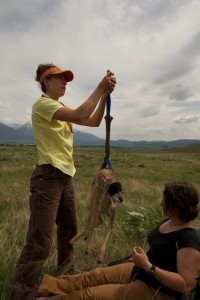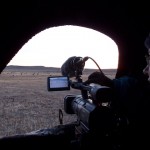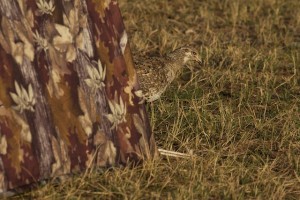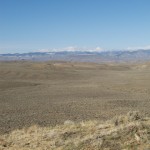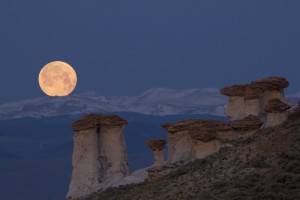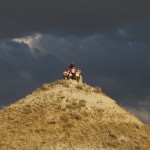Congratulations goes out to our fearless leader Gail Patricelli for receiving the 2012 Chancellor’s Award for Undergraduate Mentorship! By extension, congrats to grad students Teresa, Jessica, Jessica, Jen, Conor, Anna, and Melissa for helping support such large numbers of high quality undergraduate research projects over the past few years. I may just take a bow as well, as I’ve had a role in recruiting, training, and supervising a number of these students.
Category Archives: Uncategorized
Phirst Phinishing PhD Students
We are back in Davis! The thousands of miles, the packing and unpacking, the dust and wind, are now firmly in the rearview mirror.
Our reason for getting back last week was that not one but TWO of Gail’s graduate students were giving exit seminars. The first was Jessica Yorzinski (I should say Dr. Yorzinksi- she is the first from the Patricelli Lab to complete her dissertation defense). Jessica has been working on an astounding number of projects during her time at Davis, but her focus has been on studying female gaze patterns during courtship in peafowl. She has set up and maintained a captive colony of male and female peafowl at a farm in Durham, North Carolina, and has trained the peafowl hens to wear eye-tracking headgear to monitor their eye movements when encountering males. This was definitely one of the more fearless dissertation projects I’ve ever seen, but Jessica managed to solve all manner of technical and other problems to answer the following question: when faced with such an elaborately ornamented suitor, just what do females actually look at? Jessica gave a fantastic seminar, and the beginnings of an answer to this question.
The second student was Teresa Iglesias, who presented her work on “cacophonous aggregations” in western scrub jays. Teresa noticed scrub jays would apparently alarm call when they encountered a dead jay, and other jays would come in to investigate. Teresa’s PhD involved a series of field experiments to test how jays respond to different stimuli (different sorts of dead birds, as well as predators), and also started to look what brain areas seem to be involved with these reactions. I really like Teresa’s project too- she focused on a common urban species, and was able to conducts a series of studies to explore a (probably common) but heretofore undescribed behavior that actually tells us a lot about how animals see the world. Teresa’s results suggest that scrub jays are alert to cues of risk, and that seeing a dead jay on the ground is a good sign to be vigilant or even avoid an area that may hide unseen dangers.
Congrats to Jessica and Teresa, and to Gail for launching her first graduates! You can contact them via the Grad Student Page on Gail’s website.
Pronghorn Heaven
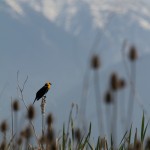 I guess it says something about how much we like field biology that, after a grueling season in Lander, Gail Anna and I are willing to go spend another week being field assistants on someone else’s project. On the way back west to California, we stopped at John Byers’ research site to help out with his long-term study of Pronghorn.
I guess it says something about how much we like field biology that, after a grueling season in Lander, Gail Anna and I are willing to go spend another week being field assistants on someone else’s project. On the way back west to California, we stopped at John Byers’ research site to help out with his long-term study of Pronghorn.
John is set up in a beautiful old house, quite close to the 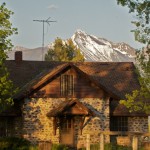 National Bison Range. The site is in a picturesque agricultural valley between the Mission Range and Sapphire Range in western Montana. Great views everywhere, and lots of wildlife. It helps that we arrived at probably the greenest time of the year, with spring in full surge all around us. The house is on a ranch with a few horses, cows, and a lot of cute fluffy sheep.
National Bison Range. The site is in a picturesque agricultural valley between the Mission Range and Sapphire Range in western Montana. Great views everywhere, and lots of wildlife. It helps that we arrived at probably the greenest time of the year, with spring in full surge all around us. The house is on a ranch with a few horses, cows, and a lot of cute fluffy sheep.
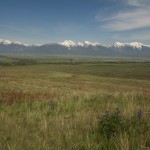 The field site itself is incredible- 30 square miles of rolling meadows and tall hills carpeted with purple lupines and big clusters of yellow mule’s ears. There are a few hundred bison, along with a lot of white-tailed deer and of course the monitored population of pronghorn. John and his recently-finished graduate student Erin know all the individuals, and much of our first week has been tracking everybody down and waiting for the females (does) to give birth. The first birthing date was unexpectedly late this year, but we did get to catch at least one before leaving.
The field site itself is incredible- 30 square miles of rolling meadows and tall hills carpeted with purple lupines and big clusters of yellow mule’s ears. There are a few hundred bison, along with a lot of white-tailed deer and of course the monitored population of pronghorn. John and his recently-finished graduate student Erin know all the individuals, and much of our first week has been tracking everybody down and waiting for the females (does) to give birth. The first birthing date was unexpectedly late this year, but we did get to catch at least one before leaving.
Our travels have also taken us to Yellowstone and Glacier National Parks- two of the truly spectacular places on this planet. Even if I don’t have an update specifically about those, I’ll definitely have some photos up on my flickr site.
Looking Back on the 2012 Season
We haven’t left Wyoming yet, and I don’t consider our season officially done until we’ve washed the vehicles and returned them to Fleet Services at UC Davis, but the crew leaving and having to pack up camp definitely puts me in a retrospective mood. Some thoughts on the 2012 season:
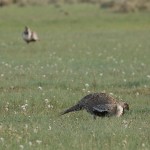 Overall we got REALLY lucky with the weather. This has been an amazingly warm, dry year, and we were rarely prevented from accessing the leks or collecting data. It seemed like we might have gotten a little more wind in the mornings, and the rain-out on our final experiment (when Stacie was going to get to join us on the lek) was a bummer, but otherwise we really could not ask for better weather.
Overall we got REALLY lucky with the weather. This has been an amazingly warm, dry year, and we were rarely prevented from accessing the leks or collecting data. It seemed like we might have gotten a little more wind in the mornings, and the rain-out on our final experiment (when Stacie was going to get to join us on the lek) was a bummer, but otherwise we really could not ask for better weather.
As I said in my last post, the crew was fantastic. This project requires field technicians who completely buy in to what we’re doing, and they seemed to do that. It makes it much more fun when they are nice interesting people who are easy to live with, which they were. Once again, we did a good job selecting these folks out of the pool of more than 70 applicants.
We collected a LOT of data this year. The arrays were installed relatively early, so we got sound recordings from before or around the peak in breeding. We managed at least two experimental treatments on each lek. Anna collected focal data on courtships and female behavior almost every day.
Gail did a great job turning an idea for a robot into a working tool for interacting with free-living animals. Besides just getting a realistic looking skin on the taxidermy mold, she had to solve challenges like figuring out the best wheels or treads, figuring out how to make the tail bend down when the robot leans forward so the robot isn’t mooning the whole lek. In general, the males really responded well this year.
Having to drop Preacher Lek from our stable of focal leks could have been a problem, but I think we handled it pretty well. Preacher’s replacement, Cottontail, was definitely a challenge, but I feel good about our effort there. Liz (and sometimes Mel) had to put some long hours there waiting for the last birds to leave. There were a lot of birds, and probably some movement of males back and forth from the upper center to our focal area closer to the reservoir. This meant new birds showing up all the time!
Our crew scheduling worked pretty well- it was a little uneven in that Cottontail always had more of everything than either Monument or Chugwater, but there are only so many ways to spread 4 people over 3 leks. Hats off to Mel for being a great floater, and learning the birds at all 3 leks. Although it might not have felt like it sometimes when we had to make last minute changes, but we did a much better job of planning ahead as well. Our crew not only had more frequent mornings off (once every eight days), but often actually knew when those were going to be.
The crew may have spent as much time watching video grouse than they did watching live ones. Collecting video data back in the lab will now be a lot easier, as we will know which males were where for the fembot experiment tapes, focal female courtship tapes, and the sound recording. This was definitely not the favorite part of the job for the crew, but they managed to get it all done.
I found a new lek! And not too far from our camp. I think that’s pretty neat. I got to do counts on several leks I’d never been to. It’s nice to hear from the local managers like Sue and Stan how important these counts are.
No high-speed video this year. We still haven’t analyzed the set of clips that Gail collected last year. HSV is always really fun, and can be something the crew starts analyzing here, but we had neither the time nor the specific question that required it this year.
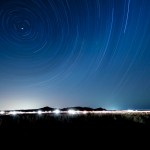 We didn’t spend much time capturing birds this year. This is probably our biggest challenge now- figuring out how to schedule a crew so we can work at night, in the morning, and in the afternoon. Something to think on for next year.
We didn’t spend much time capturing birds this year. This is probably our biggest challenge now- figuring out how to schedule a crew so we can work at night, in the morning, and in the afternoon. Something to think on for next year.
I got to meet Joe Hutto.
It was really fun to see our research area in such a warm year. The season was advanced substantially, so we got to see a lot of plants and animals that we normally miss. And in any year, this is a really special place to get to live and work. The more than 5000 photos I’ve taken this spring can attest to that!
And We’re Done! (almost)
It’s been a whirlwind week or two, but the season is over! We’ve run our final experiments (or not), recorded our last sounds, and wished our wonderful crew safe journeys as they head towards their next employments. Gail, Anna and I have a few more days here in Lander to pack up our gear and dodge the cows that will be here any day now, but otherwise we’ve collected all of the blinds, stakes and cables. I’ll have more thoughts to share on the season in upcoming posts, but for now a big Thank You to Liz, Becca, Julia, and Mel. We had a great season and it was in large part to their hard work and that they were fun people to be around (always an important thing in a small camp like ours).
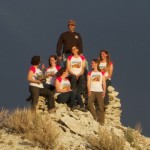 The photo is one of our crew photos from “Mount Boob,” a rather mammerific hill near camp that seemed a fitting place to take a photo with an all female crew. (Thanks Stacie Hooper for snapping the shots). Gail bought the crew t-shirts with a “roller girl” imagining of the fembot, and they are all wearing them in the photo.
The photo is one of our crew photos from “Mount Boob,” a rather mammerific hill near camp that seemed a fitting place to take a photo with an all female crew. (Thanks Stacie Hooper for snapping the shots). Gail bought the crew t-shirts with a “roller girl” imagining of the fembot, and they are all wearing them in the photo.

